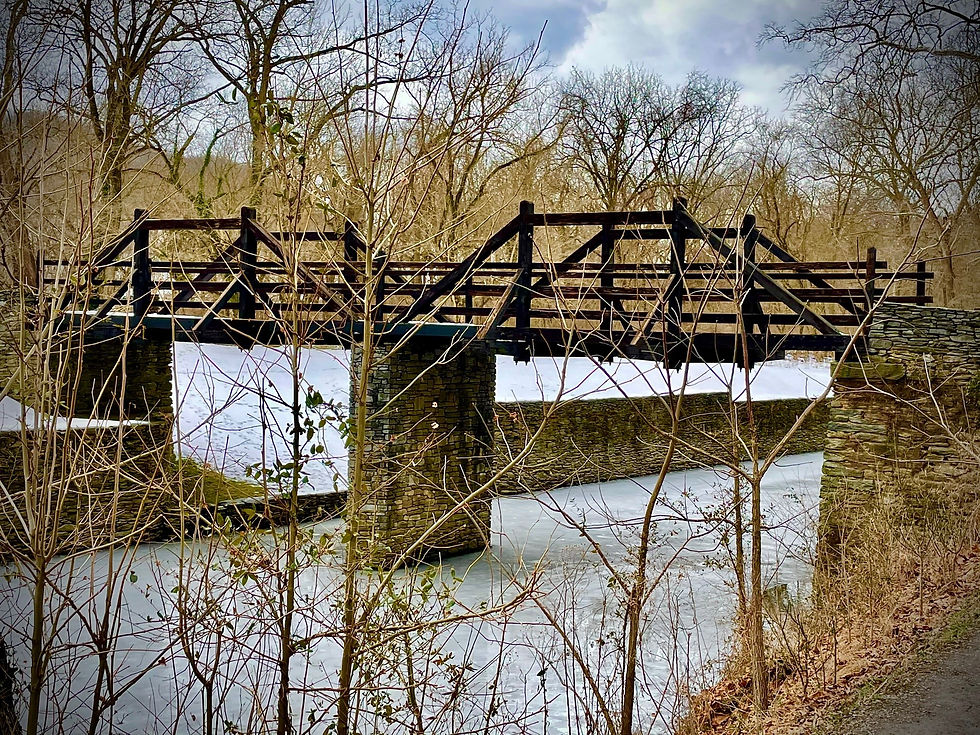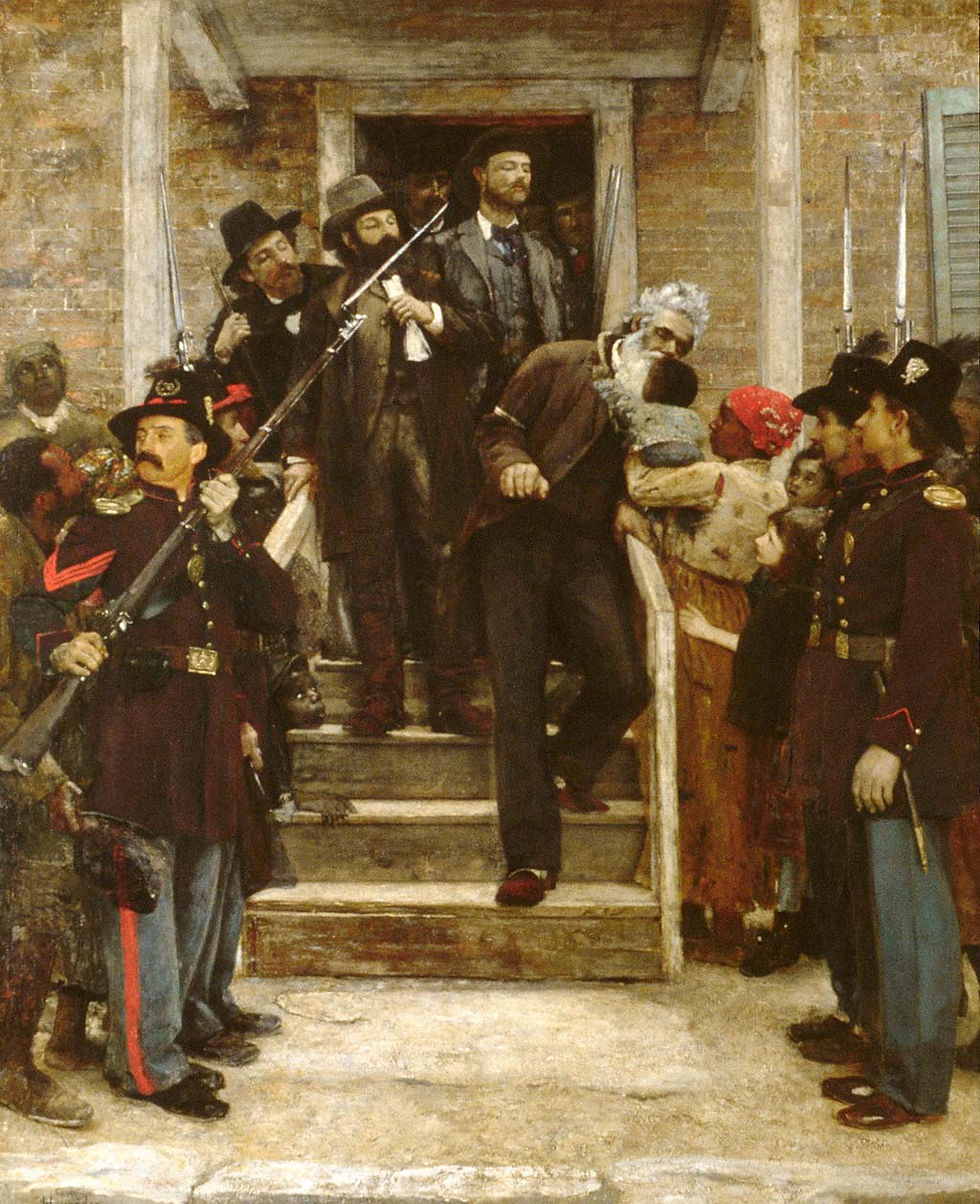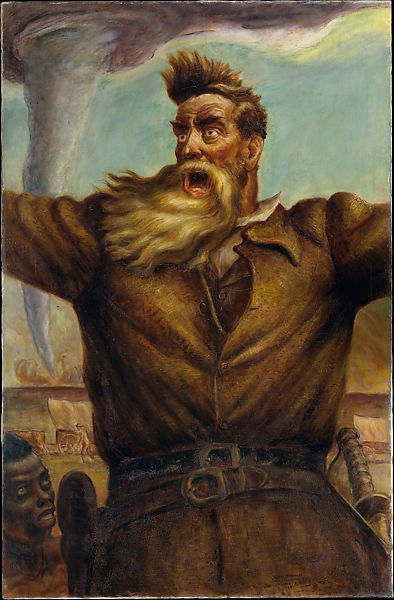Had I so interfered in behalf of the rich, the powerful, the intelligent, the so-called great, or in behalf of any of their friends, either father, mother, brother, sister, wife, or children, or any of that class, and suffered and sacrificed what I have in this interference, it would have been all right; and every man in this court would have deemed it an act worthy of reward rather than punishment.
-John Brown
Watching the opening video of the impeachment trial, an orgy of insurrection and desecration of one of our country's sacred civic spaces, and listening to the excuses given by some of our elected officials and neighbors for what was plainly a mass act of treason, led me to another insurrection some 161 years ago.
As it happened, P and I wandered last week into Harpers Ferry, West Virginia, now managed by the National Park Service. I had been here years before, with the boys on our "mancation" tour of Civil War battlefields. P had never seen the place, and with a little map study I concluded that the drive from Fredericksburg to Corning would only be extended by maybe 45 minutes with a diversion northwest into the valley where West Virginia, Virginia, and Maryland meet at the confluence of the Potomac and Shenandoah Rivers.

It is a lovely little village, tucked in a gorge formed by the rivers, restored and maintained as it appeared in the mid-19th century.
On the day we were here it was surprisingly crammed with tourists, and freezing cold.

The photo doesn't quite capture it, but that creek across from the street depicted in the first photo above (a stock pic from the internet) is frozen solid with a layer of azure blue ice.
Peg was charmed, despite the very bad thing that had happened here in 1859. We'd been to quaint old villages with dark histories before, places where you could feel the demons of those moments still crouched along the storefronts. Jim Thorpe, Pennsylvania comes to mind, a favorite tourist destination that is also the site of the execution of my great great grandmother's older brother in the 1870s. I stood on the spot where he was hanged. The evil was palpable.
Vicksburg is that way as well, a place thick with ghosts who must ponder with bemusement the casinos now in their midst.
But Harpers Ferry has none of that, or at least we didn't feel it. And yet, it was here that a harbinger of the civil conflict to come played out, led by the abolitionist John Brown.
How you remember John Brown seems to have a lot to do with where you grew up. Up north he's an eccentric martyr to the cause of freedom, a champion of the victims of the race-based chattel slavery that was the linchpin of the southern economy.

But if you, like me, grew up in the South, you remember him as a fanatic, a murderer, a lunatic who got what was coming to him.

There is a kernel of truth in both versions of the man.
The reason we remember him at all is the raid on Harpers Ferry in October of 1859. Brown and a band that included some of his sons planned to seize the federal arsenal at Harpers Ferry, and redistribute the thousands of rifles there as the trigger for a rebellion that would end slavery by force. To understand why this struck a terrifying chord in the South, it is important to remember that over a third of the population below the Mason-Dixon line was black and enslaved. One reason the Confederacy was able to assemble an army as rapidly as it did was that Southern communities in 1860 already had well-armed and organized militias standing by to put down potential slave uprisings. In fact, the original Citadel in Charleston, built on the edge of Marion Square, was originally constructed as a fort for white residents to escape murderous, rampaging slaves in the event of a revolt, which seemed imminent after the thwarted Denmark Vesey uprising in 1822. Southerners lived in terror that this population they abused for gain would rise up in revenge, and here was John Brown attempting to arm them en masse.
Of course, no slave rebellion happened in the wake of John Brown's arrival and seizure of the armory. Before long the hills around Harpers Ferry were vibrating with hundreds of locals, many carrying hunting rifles, on their way to town to put down the insurrection. Brown and his band (what does one even call these guys? Guerillas?) holed up in the engine house, which still stands to this day.

Next to arrive was a detachment of Marines led by Army Colonel Robert E. Lee, in an early example of what we'd now call a "purple suit" operation for its multi-branch composition. Lee sent a messenger under a white flag (none other than Jeb Stuart, another young officer) to offer Brown the chance for surrender, but when Brown refused the Marines broke down the door and engaged in a brief firefight that ended with Brown wounded and under arrest, and several participants shot dead. One was Brown's own son. That image has always haunted me, the end of the skirmish, thick gunpowder smoke clearing and Brown seeing his boy dead on the floor. Was there a moment of realization, of regret?
Brown didn't get much time to ponder all that. He was tried, convicted, and condemned, hanged a bare six weeks after the raid. John Wilkes Booth and Walt Whitman were both at the execution. The South took this adumbration of future slave unrest to heart, and started feverish military preparation in anticipation of the next attempt at insurrection. Instead, they themselves ended up being the insurrectionists, and those militias weren't used to keep the slaves down, but instead became an army that fought the government of the United States for four years in a conflict that inflicted three quarters of a million deaths.
Fun fact: twenty percent of all military-aged white males in the Confederacy died in the war. Would my ancestors have done things differently if they'd known this would be the result?
I've wandered off topic here. This post started with a discussion of another insurrection, this one not in some outpost tucked in a forgotten corner of the country, but in the Capitol itself. Folks lost their lives, and the audio accompanying the images of the insurrectionists makes it clear they came to prevent Congress from certifying election results even if that meant killing or taking hostage the members who disagreed with them.
But these insurrectionists were on the side of the demographic in power, not on a mission of liberation but to dismantle the democratic processes that will inevitably bring a sunset to their privilege as the racial composition of our country continues to change. And because they represent the interests of the entitled, no one will suffer any serious consequences, much less hang. Only one of them was shot during the revolt, even as they were killing Capitol police officers. One was released a few days ago on bail to attend a corporate retreat in Mexico. There will likely be few who see the inside of a prison cell, even as they brag about their participation in a revolt.
Meanwhile, the trial in the Senate goes on today, with the impeached and disgraced perpetrator of this spectacle, the John Brown of the privileged class, watching from the comfort of his oceanfront home, secure in the knowledge that nothing is going to happen to him, nothing at all, except perhaps another opportunity to grift off the rubes who elected him.
We are a country of high ideals that often are not reflected in our actions. Still, I remain an optimist, hoping against evidence that the arc of history does, as Martin Luther King once observed, bend toward justice.
Comments